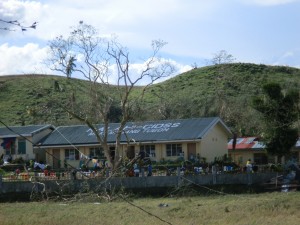Even the world’s strongest storm failed to topple the school building projects of the Department of Social Welfare and Development’s Kapit-Bisig Laban sa Kahirapan-Comprehensive Integrated Delivery of Social Services (Kalahi-CIDSS).
Proof to this are the still intact Kalahi-CIDSS school buildings in the towns of Ajuy and Barotac Viejo, among the towns that were badly hit by Typhoon “Yolanda” in the northern part of Iloilo province.
Aside from the school buildings, it was also observed that the health centers in these towns that were built through the Kalahi-CIDSS were also not affected by the “super typhoon.”
“This is a strong proof that our Kalahi-CIDSS is indeed a world standard. You see, our school buildings are being made into evacuation centers because they are the only ones that are still intact and still have roofs,” said DSWD6 director Ma. Evelyn B. Macapobre.
The regional director credited this to the corruption-free implementation of the project and the strict monitoring and evaluation that is being made during the construction Kalahi-CIDSS projects.
Director Macapobre made the observation after she personally witnessed the devastation caused by Typhoon Yolanda when she travelled to the northern towns to deliver the relief goods.
Kalahi-CIDSS is the flagship poverty reduction project of the Philippine government which adopts the CDD or the community-driven development (people centered approach) as the overall strateg

y of the project. Through the CDD, the people themselves decide of the priority needs and the response to address those needs. The people design and implement the project themselves and they also manage the resources to be used in implementing the community projects./DSWD6/Wenna Berondo-Bendol
